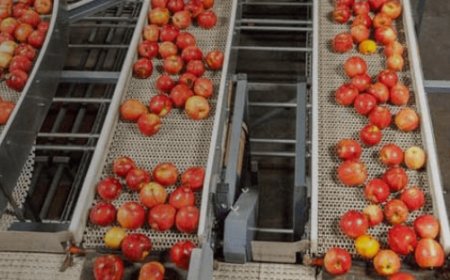How to Find Homemade Tamales in Fort Worth
How to Find Homemade Tamales in Fort Worth Fort Worth, Texas, is a city rich in cultural heritage, where the aroma of slow-cooked meats, spicy salsas, and steaming masa fills the air during holidays, weekends, and even quiet weeknights. Among its most cherished culinary traditions is the homemade tamal — a hand-wrapped, corn-based delicacy steeped in generations of family recipes. Unlike mass-prod
How to Find Homemade Tamales in Fort Worth
Fort Worth, Texas, is a city rich in cultural heritage, where the aroma of slow-cooked meats, spicy salsas, and steaming masa fills the air during holidays, weekends, and even quiet weeknights. Among its most cherished culinary traditions is the homemade tamal — a hand-wrapped, corn-based delicacy steeped in generations of family recipes. Unlike mass-produced versions found in grocery stores, homemade tamales are made with care, often using lard rendered from scratch, freshly ground corn, and fillings passed down through families. Finding authentic, homemade tamales in Fort Worth isn’t just about satisfying a craving — it’s about connecting with community, history, and the quiet labor of love behind every steaming bundle.
But for newcomers, visitors, or even longtime residents, locating these hidden gems can feel like searching for a needle in a haystack. Supermarkets offer convenience, but they rarely capture the soul of true homemade tamales. This guide will walk you through every step of the journey — from understanding what makes a tamal “homemade” to uncovering the best local sources, trusted networks, and seasonal patterns that lead to the most flavorful finds. Whether you’re planning a holiday feast, seeking a taste of home, or simply curious about Fort Worth’s culinary soul, this comprehensive resource will empower you to discover tamales that are not just eaten — but experienced.
Step-by-Step Guide
Understand What Makes a Tamal “Homemade”
Before you begin your search, it’s essential to distinguish between commercially produced tamales and those made in home kitchens. Homemade tamales are typically prepared in small batches, often by individuals or families who sell them out of necessity, tradition, or passion — not profit. They are rarely packaged in plastic trays with barcode labels. Instead, they’re wrapped in corn husks or banana leaves, sometimes bundled in paper towels or cloth, and sold from kitchen counters, front porches, or local fiestas.
Key indicators of homemade tamales include:
- Hand-wrapped husks with visible folds and uneven edges
- Fillings that vary slightly between batches (e.g., chicken with green chile one week, pork with red sauce the next)
- No expiration date or ingredient list — often sold “as is”
- Pricing based on quantity (e.g., $1 per tamal, $15 for a dozen)
- Sold by word-of-mouth or posted on community boards, not advertised on billboards
Recognizing these traits helps you avoid commercial imitations and focus your efforts where authenticity thrives.
Start with Local Community Networks
The most reliable source for homemade tamales in Fort Worth is the community itself. Begin by engaging with local cultural hubs — churches, cultural centers, neighborhood associations, and Latinx-owned businesses that serve as informal gathering points.
Visit churches like Our Lady of Guadalupe Catholic Church in the Southside On Lamar area or St. Mary’s Catholic Church in the Near Southside. During Lent, Christmas, and Día de los Muertos, these churches often host tamaladas — community events where dozens of families gather to make hundreds of tamales together. Many sell extras to raise funds for church programs. These are some of the most consistent sources of high-quality, traditional tamales.
Join local Facebook groups such as “Fort Worth Latinx Community,” “Tamales Fort Worth TX,” or “North Texas Foodies.” Members regularly post when they’re making or selling tamales — often with photos, pickup locations, and pre-order instructions. These groups are updated daily during peak seasons and are the digital equivalent of the neighborhood bulletin board.
Visit Farmers Markets and Pop-Ups
Fort Worth’s farmers markets are treasure troves for homemade food. The Fort Worth Farmers Market at the Cultural District (open Saturdays) and the Southside on Lamar Farmers Market (Sundays) frequently host small vendors who make tamales in their home kitchens. These vendors often operate under Texas Cottage Food Laws, which allow home-based food producers to sell low-risk items like tamales without a commercial kitchen license.
Look for signs that say “Hecho en Casa” or “Homemade Tamales.” Ask vendors if they make them themselves or if they’re made by a family member. The best sellers will describe the recipe — “My abuela’s recipe from Puebla,” or “We use lard from our neighbor’s pig.” They’ll often let you taste before you buy.
Seasonal pop-ups are also common. During December, you’ll find tamales at holiday bazaars hosted by schools, community centers, and nonprofit organizations. Check event calendars for the Fort Worth Cultural Arts Center, La Plaza de Armas, and El Centro College — these venues often feature local vendors during the holiday rush.
Follow Local Food Bloggers and Influencers
Fort Worth has a vibrant local food scene, and several bloggers and Instagrammers specialize in uncovering hidden culinary gems. Follow accounts like @fortworthfoodie, @texasfoodtrail, and @tamalhuntingtx. These creators regularly post about new tamal vendors, including exact addresses, pickup times, and reviews.
Many of these influencers have built relationships with home cooks over time. They often get early access to new sellers or exclusive pre-orders. By following their content, you’ll be among the first to know when a new tamalista opens for business — sometimes even before they post on Facebook.
Don’t overlook YouTube. Channels like “Texas Table Top” and “Fort Worth Eats” occasionally feature home-based tamal makers in short documentaries. These videos often include interviews with the makers, revealing their stories and how to contact them directly.
Explore Neighborhoods Known for Latinx Culture
Some Fort Worth neighborhoods are epicenters of homemade tamal production. Focus your search in these areas:
- Southside On Lamar — A historically Mexican-American neighborhood with dozens of home kitchens operating under the radar. Look for cars parked outside homes with handwritten signs: “Tamales Hoy — $12/dozen.”
- Near Southside — Home to many immigrant families who sell tamales from their driveways or garages. Many operate on weekends only.
- Forest Hill — A quieter area where older generations still prepare tamales for neighbors and friends. Ask at local corner stores like La Tiendita de Forest Hill — they often know who’s making tamales this week.
- Watauga — Though suburban, this area has a growing Latinx population. Check local bulletin boards at Laundromats, gas stations, and grocery stores.
When driving through these neighborhoods, pay attention to small details: cars with “Tamales” written on the window, folded paper bags on porches, or bicycles with insulated coolers. These are telltale signs of home-based sellers.
Ask at Local Grocery Stores and Butcher Shops
Even if a grocery store doesn’t sell homemade tamales, its staff often know who does. Visit Latinx-owned markets like Supermercado El Gallo on Montgomery Street, La Michoacana Meat Market in the Near Southside, or El Ranchito Market in Watauga.
Ask the clerks: “¿Quién hace tamales caseros por aquí?” or “Do you know anyone who makes tamales at home and sells them?” They’ll point you to someone — often a grandmother who delivers to the store every Friday. Some stores even act as unofficial collection points, holding tamales for pickup on behalf of home cooks.
Butcher shops are another goldmine. Many sell fresh lard, masa harina, and corn husks — the same ingredients used in homemade tamales. The owner is likely to know who’s buying in bulk and making them at home. Don’t be shy — strike up a conversation. “I’m looking for tamales made the old way — do you know anyone?”
Use Google Maps Strategically
While most homemade tamal makers don’t have official business listings, you can still use Google Maps to your advantage. Search for:
- “Mexican food near me” — then look for businesses with no website, few reviews, and photos of tamales in paper wrappers
- “Tamales Fort Worth” — filter results by “Photos” and look for images of homemade-style bundles, not packaged trays
- “Tamalada Fort Worth” — this term often leads to community events or church fundraisers
Read the reviews carefully. Phrases like “Made by my neighbor’s mom,” “Taste just like my abuela’s,” or “Bought from her porch last Christmas” are strong indicators of authenticity. Avoid listings with generic descriptions like “Fresh tamales daily” — those are usually commercial.
Time Your Search for Peak Seasons
Homemade tamales are not a year-round commodity. They’re most abundant during key cultural and religious periods:
- Christmas Season (Late November – January 6) — The busiest time. Families make dozens, sometimes hundreds, of tamales for holiday gatherings. Many sell extras.
- Lent (February–March) — Especially during Holy Week. Tamales are a traditional meatless dish during this time.
- Día de los Muertos (November 1–2) — Offerings and meals often include tamales. Home cooks prepare them for altars and community events.
- Local Fiestas and Cultural Festivals — Events like the Fort Worth Mexican Independence Day Parade (September) or La Fiesta de las Flores (May) often feature homemade vendors.
If you’re looking for homemade tamales outside these windows, your search will be harder — but not impossible. Many home cooks sell year-round, especially those who’ve built a loyal customer base. But your odds are highest during the holidays.
Pre-Order and Build Relationships
Homemade tamales are made in small batches. You won’t find them on demand. To guarantee access, pre-order. Most sellers require 24–72 hours notice.
When you find a vendor, ask: “Can I order for next week?” or “Do you take reservations?” Write down their name, phone number, and pickup location. Keep a small notebook or digital note with this information.
Over time, build a relationship. Bring a small gift — a bottle of Mexican soda, a bag of coffee, or fresh fruit. Ask about their family’s recipe. Show genuine interest. In return, you’ll be added to their list, get priority access, and sometimes even receive a free tamal as a gesture of appreciation.
Best Practices
Respect the Craft and the Culture
Homemade tamales are not just food — they’re an expression of identity, memory, and resilience. Many makers are immigrants, single mothers, or elders who’ve spent decades perfecting their recipe. Approach them with humility and gratitude.
Don’t haggle over price. Tamales require hours of labor — soaking husks, grinding masa, preparing fillings, wrapping, and steaming for hours. A dozen for $12–$18 is fair. Paying less undermines their work.
Don’t ask for the recipe. While some may share, many consider it sacred — a family secret passed down through generations. Instead, compliment the flavor. Say, “This tastes just like my grandmother’s.” That connection means more than a written recipe.
Use Cash and Be Flexible
Most home-based tamal makers don’t accept credit cards or digital payments. Cash is king. Keep small bills on hand — $1, $5, $10, and $20. Some may only accept exact change.
Be flexible with pickup times. They’re often juggling work, family, and cooking. If they say “I’ll have them ready by 4 p.m.,” arrive between 3:30 and 5 p.m. Don’t show up at 3 p.m. sharp — they’re still steaming.
Bring Your Own Containers
Homemade tamales are often wrapped in paper or cloth, not plastic. Bring a reusable container, insulated bag, or even a clean towel to transport them. This shows respect for their eco-friendly practices and helps keep them warm.
Some sellers may charge extra for packaging. Bringing your own avoids this and builds goodwill.
Document and Share Responsibly
If you take photos of tamales or the people who make them, always ask permission. Some cooks are private, especially if they’re undocumented. Never tag their home address or name without consent.
When sharing on social media, credit them. Say: “Homemade tamales from Doña Rosa, made in her kitchen on South Lamar.” This helps them get more business without exposing them to risk.
Support, Don’t Exploit
Never post a video of a home cook making tamales and claim it as your own content. Don’t try to turn them into a “viral trend.” Their work is labor, not entertainment.
Instead, write a thoughtful post: “Found the best tamales in Fort Worth this week — made by a woman who’s been selling them for 30 years. Here’s how to find her.”
Learn Basic Spanish Phrases
While many makers speak English, most are more comfortable in Spanish. Learn a few phrases:
- “¿Dónde puedo comprar tamales caseros?” — Where can I buy homemade tamales?
- “¿Cuánto cuestan?” — How much are they?
- “Están deliciosos.” — They’re delicious.
- “Gracias por su trabajo.” — Thank you for your work.
Even a simple “Gracias” goes a long way. It shows you see them as a person, not a vendor.
Tools and Resources
Online Communities
Facebook Groups:
- Fort Worth Latinx Community — 12,000+ members. Daily posts about food, events, and vendors.
- Tamales Fort Worth TX — Dedicated solely to tamal sales and recommendations.
- North Texas Foodies — Broader food group, but many threads on homemade Mexican food.
Instagram Hashtags:
FortWorthTamales
HomemadeTamalesTX
TamaladaFW
TamalesDeMiAbuela
Search these hashtags weekly — new vendors appear constantly.
Local Organizations
These nonprofits and cultural centers often connect home cooks with customers:
- Latino Cultural Center of Fort Worth — Hosts events and maintains a list of local food artisans.
- Latino Chamber of Commerce of Tarrant County — Offers resources for small food entrepreneurs.
- Fort Worth Independent School District Community Outreach — Many teachers and staff know of home-based tamal makers.
Visit their websites or call during business hours. Ask: “Do you have a directory of home-based food producers?”
Mobile Apps
While apps like Uber Eats and DoorDash rarely feature homemade tamales, some hyperlocal apps can help:
- Nextdoor — Search “tamales” in your neighborhood. Residents often post: “My mom made 50 tamales — $1 each.”
- Meetup — Look for “Latino Food Experiences” or “Fort Worth Cultural Potlucks.” These gatherings often include homemade tamales.
Books and Documentaries
Deepen your understanding with these resources:
- Tamales: A Culinary History by Elena M. de la Rosa — Explores regional variations and family traditions.
- La Cocina de la Abuela — A local self-published cookbook sold at Fort Worth markets.
- Documentary: “Tamales: The Heart of the Home” (2022) — Available on YouTube, features Fort Worth home cooks.
Print Resources
Check the bulletin boards at:
- Libraries — Fort Worth Public Library branches often have community flyers.
- Laundromats — Especially in Southside On Lamar and Near Southside.
- Gas stations — Look for taped-up flyers with phone numbers and prices.
These physical postings are often more current than online listings.
Real Examples
Example 1: Doña Maria’s Christmas Tamales
In December 2023, a 72-year-old grandmother named Doña Maria began selling tamales from her home in Southside On Lamar. She’d been making them since 1972, using her mother’s recipe from Jalisco. She posted on the “Fort Worth Latinx Community” Facebook group: “Tamales de pollo y verde, 12 for $15. Pick up Sat 12/16, 10am–2pm, 2102 S Lamar.”
Over 80 people responded. She sold out in 4 hours. One buyer, a college student, returned the next week with a bag of fresh corn husks from his abuela’s garden. Doña Maria hugged him and gave him three extra tamales. That’s the culture — not commerce, but connection.
Example 2: The Tamalada at St. Mary’s Church
Every December, St. Mary’s Catholic Church hosts a tamalada that draws 200+ volunteers. They make over 3,000 tamales. The church sells them for $1 each to the public. Lines form by 7 a.m. Many buyers come every year — some have been coming for 40 years. The tamales are simple: pork in red sauce, chicken in green, and a few vegetarian. No fancy packaging. Just steaming, fragrant, and perfect.
One regular, Carlos, says: “I don’t buy tamales anywhere else. These taste like my childhood. That’s the only thing that matters.”
Example 3: The Weekly Vendor at La Tiendita
At La Tiendita de Forest Hill, a small grocery store, a woman named Rosa comes every Friday with a cooler full of tamales. She doesn’t advertise. She doesn’t have a phone number. She just shows up. The store owner knows her and lets her leave her cooler in the back. Customers ask, “Is Rosa here today?”
Her tamales are made with lard from her neighbor’s pig, masa ground with a hand mill, and chiles roasted over an open flame. She sells them for $1.25 each. She’s been doing this for 18 years. No one knows her last name. But everyone knows her tamales.
Example 4: The Instagram Success Story
A young woman named Lucía started posting photos of her tamales on Instagram under the handle @tamalesconamor. She made them in her apartment in Watauga, using her Cuban-Mexican grandmother’s recipe. Within six months, she had 5,000 followers. She now takes pre-orders every Tuesday for Saturday pickup. Her tamales — including a unique mango-ají filling — sell out in under an hour. She doesn’t have a website. She doesn’t use apps. Just Instagram and word-of-mouth.
FAQs
Can I order homemade tamales online in Fort Worth?
True homemade tamales are rarely available through online ordering platforms like DoorDash or Uber Eats. These services require commercial kitchens and licensing, which most home cooks don’t have. Your best bet is to find sellers on Facebook, Instagram, or through community networks and arrange pickup directly.
How much should I expect to pay for homemade tamales?
Prices typically range from $1 to $1.50 per tamal, or $12–$18 per dozen. Higher prices may reflect premium ingredients (like organic masa or grass-fed lard) or specialty fillings. If you see tamales priced below $0.75 each, they’re likely mass-produced.
Are homemade tamales safe to eat?
Yes. Most home cooks follow strict food safety practices, especially during holidays. They often use clean surfaces, gloves, and refrigerated storage. Texas Cottage Food Laws require sellers to label their products with their name and address — look for this on receipts or packaging. If you’re concerned, ask how they store and transport them.
Can I make my own tamales at home?
Absolutely. Making tamales at home is a rewarding tradition. Start with masa harina, lard, broth, and corn husks. Many YouTube tutorials and local cooking classes (offered by the Latino Cultural Center) can guide you. The process takes time, but the result is deeply satisfying.
Why don’t more restaurants sell homemade tamales?
Restaurants operate under commercial food codes, which require standardized recipes, licensed kitchens, and health inspections. Homemade tamales are irregular, seasonal, and deeply personal — they don’t fit the restaurant model. That’s why they’re so special. They exist outside the system.
What’s the difference between Northern and Southern Mexican tamales?
Fort Worth tamales are mostly influenced by Central and Southern Mexican styles. Northern tamales are often smaller, made with wheat flour, and filled with cheese or beef. Southern tamales (from Oaxaca, Puebla, Veracruz) are larger, use corn masa, and are filled with mole, chicken, or pork. Most Fort Worth homemade tamales follow the Southern style.
Do I need to reheat tamales before eating?
Yes. Always reheat tamales — steaming is best (20–30 minutes), but microwaving wrapped in a damp towel works too. Never eat them cold. The heat unlocks the flavor and softens the masa.
Can I freeze homemade tamales?
Yes. Wrap them individually in plastic, then place in a freezer bag. They’ll keep for up to 3 months. Reheat from frozen — no need to thaw first.
Conclusion
Finding homemade tamales in Fort Worth is more than a culinary quest — it’s a journey into the heart of a community that values tradition, patience, and shared labor. These aren’t just meals; they’re stories wrapped in corn husks, passed from mother to daughter, from neighbor to friend, from one generation to the next.
There’s no single place to go. No chain store, no branded menu, no app that can deliver the real thing. Instead, you must engage — with people, with places, with time. You must learn to listen, to ask, to show up, and to honor the hands that make them.
As you follow the steps in this guide — from joining Facebook groups to visiting neighborhood markets, from asking questions at butcher shops to respecting the quiet dignity of the makers — you’ll not only find delicious tamales. You’ll find connection. You’ll find history. You’ll find Fort Worth, not as a city on a map, but as a living, breathing, steaming, aromatic community.
So go out. Look for the cars with handwritten signs. Ask the clerk at the corner store. Post in the group. Show up on a Saturday morning with cash in hand. And when you taste that first tamal — warm, tender, rich with flavor and memory — you’ll understand why this search matters.
Homemade tamales aren’t found. They’re earned.

























